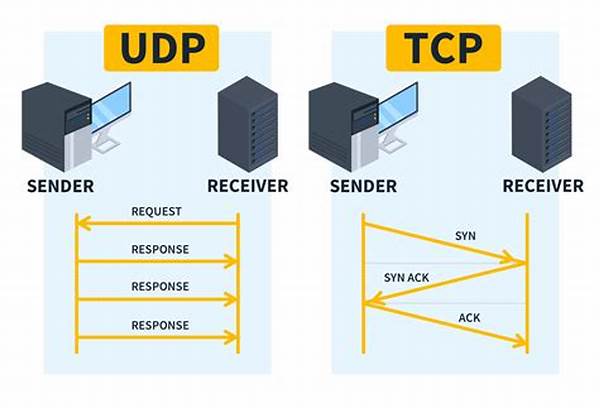In the rapidly evolving landscape of digital communication, ensuring data fidelity and minimizing transmission errors remain paramount. High-reliability communication protocols play a crucial role in safeguarding information integrity across diverse networks. These protocols are designed to facilitate seamless and error-free data exchange, thereby enhancing the reliability and performance of communication systems.
Importance of High-Reliability Communication Protocols
High-reliability communication protocols are indispensable in modern network systems where uptime and error minimization are critical. Such protocols are employed in various sectors, from telecommunications to aerospace, to ensure that data is transmitted accurately and efficiently. They incorporate mechanisms like error correction, data encryption, and redundancy to maintain the highest levels of data integrity and security. As communication networks become increasingly complex, the demand for high-reliability communication protocols continues to surge, highlighting their significance in the global communication infrastructure.
These protocols contribute significantly to reducing data loss and preventing transmission errors. By integrating sophisticated error-checking and correction techniques, they enhance the dependability of communication networks, ensuring that critical information reaches its intended destination without compromise. Moreover, high-reliability communication protocols often utilize advanced algorithms to optimize data throughput and network efficiency. As a result, they enable organizations to achieve high-performance communication standards, essential for maintaining competitive advantage in an interconnected world.
Furthermore, high-reliability communication protocols are vital in areas where communication integrity is non-negotiable, such as in healthcare, finance, and emergency services. In these domains, any data loss or error can lead to significant repercussions, thus underlining the importance of robust communication systems. These protocols not only enhance the reliability of data transmission but also contribute to maintaining the trustworthiness and credibility of communication systems across various sectors.
Key Features of High-Reliability Communication Protocols
1. Error Correction Capabilities: High-reliability communication protocols employ advanced error detection and correction techniques to ensure the accurate transmission of data, thereby minimizing the risk of corruption or misinterpretation of information.2. Data Encryption Mechanisms: They integrate strong encryption standards to protect sensitive data during transmission, ensuring the confidentiality and integrity of critical information against unauthorized access and cyber threats.3. Redundancy Systems: These protocols often include redundancy features, such as duplicate data paths or backup systems, to maintain communication continuity in case of network failures or disruptions.4. Bandwidth Optimization: By intelligently managing network resources, high-reliability communication protocols optimize bandwidth usage, ensuring efficient data flow even in network congestion scenarios.5. Scalability: Designed to accommodate the growing needs of modern communication systems, these protocols support scalability, enabling networks to handle increased loads and complex data transmission requirements seamlessly.
Applications of High-Reliability Communication Protocols
High-reliability communication protocols find extensive applications across various industries where error-free communication is essential. In the realm of telecommunications, these protocols facilitate reliable voice and data transmission, ensuring clear and uninterrupted communication between users. Complex networks like mobile and satellite communications heavily rely on such protocols to maintain the consistency and integrity of transmitted data.
In the aerospace sector, high-reliability communication protocols are critical for the secure transmission of data between aircraft and ground control systems. Given the high-stakes nature of aviation operations, these protocols help prevent errors that could compromise safety. Similarly, in the healthcare industry, they enable the accurate exchange of patient data between medical devices and health management systems, thus ensuring effective patient care.
Moreover, the finance sector utilizes high-reliability communication protocols to safeguard sensitive financial transactions and data transfers. By ensuring secure communication channels, these protocols protect against data breaches and financial fraud, thereby preserving the integrity of financial operations. In an era where data security and reliability are paramount, the deployment of these protocols across diverse fields underscores their critical role in facilitating robust and reliable communication systems.
Challenges in Implementing High-Reliability Communication Protocols
Implementing high-reliability communication protocols is not without challenges. One of the primary concerns is the need for increased computational resources to support advanced error correction and encryption features. These requirements can potentially strain existing network infrastructure, necessitating upgrades to ensure smooth protocol implementation. Additionally, the integration of redundancy and backup systems may require significant investment in additional hardware and software resources.
Another challenge revolves around the complexities associated with ensuring seamless interoperability between different communication systems. Given the varying standards and specifications across devices and networks, achieving uniform communication reliability is a daunting task. High-reliability communication protocols must be adaptable and versatile to function effectively in diverse environments, which can pose significant technical challenges during their deployment. Developing a universal standard for these protocols remains an ongoing endeavor, necessitating collaboration among stakeholders to address interoperability issues.
Despite these challenges, the benefits of implementing high-reliability communication protocols far outweigh the difficulties. The ability to ensure consistent and reliable data transmission is invaluable in industries where communication integrity is crucial. Furthermore, as the demand for secure and efficient communication systems continues to rise, advancements in protocol technology are expected to address existing challenges and drive further innovation in this field.
Future Prospects of High-Reliability Communication Protocols
The future of high-reliability communication protocols is poised for significant advancements, driven by the rapid evolution of technology and increasing demand for secure communication systems. Emerging technologies such as blockchain and machine learning are anticipated to play pivotal roles in enhancing protocol capabilities. These technologies hold the potential to revolutionize how data is verified and transmitted, offering new paradigms for ensuring communication reliability.
Advances in quantum computing promise to introduce unprecedented levels of encryption and error correction, offering potential breakthroughs in developing more robust high-reliability communication protocols. Additionally, with the expansion of the Internet of Things (IoT), there is a growing need for improved protocols to manage the vast amounts of data generated by interconnected devices. High-reliability communication protocols are expected to evolve to cater to these demands, facilitating seamless and secure IoT communication ecosystems.
In conclusion, high-reliability communication protocols remain vital to the success of modern communication systems. As technology continues to advance, these protocols must adapt to new challenges and opportunities, ensuring that they remain at the forefront of secure and efficient data transmission. The ongoing pursuit of innovation and excellence in protocol development will undoubtedly shape the future of global communication networks.
Conclusion
In summary, high-reliability communication protocols are indispensable components of contemporary communication systems. They enable robust data transmission, safeguard information integrity, and ensure seamless connectivity across diverse network environments. These protocols integrate advanced features like error correction, encryption, and redundancy to achieve high performance and reliability. Their application spans numerous sectors, including telecommunications, healthcare, finance, and aerospace, where communication integrity is essential.
Despite challenges associated with their implementation, such as the need for extensive resources and interoperability issues, the benefits of high-reliability communication protocols are undeniable. They form the backbone of secure communication infrastructures, ensuring that data is transmitted accurately and efficiently. As technological advancements continue to shape the communication landscape, these protocols are expected to evolve, incorporating emerging technologies to address future demands. The commitment to developing and deploying high-reliability communication protocols will remain pivotal in ensuring the resilience and effectiveness of global communication networks.





